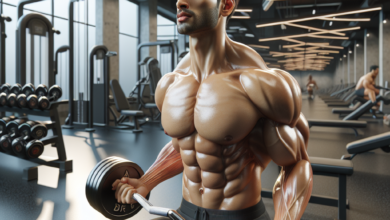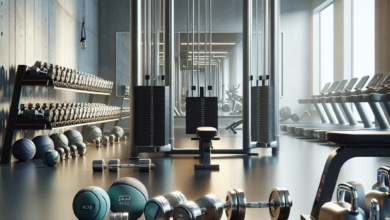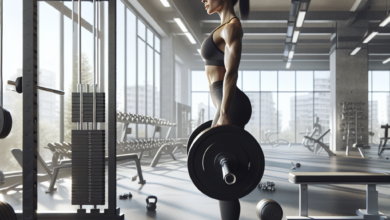The Ultimate Workout Routine at the Gym for Best Results
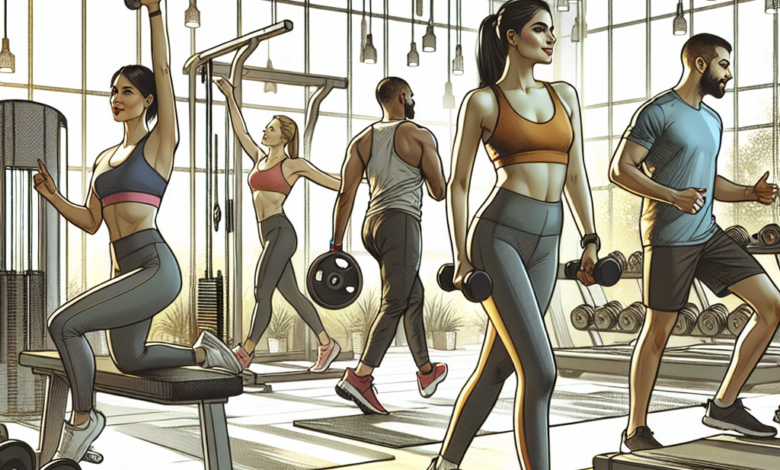
Welcome to your journey towards achieving the best results with the ultimate workout routine at the gym. This guide is designed to provide you with a comprehensive understanding of effective exercises, schedules, and tips to maximize your gains. Whether you are a beginner or an experienced gym-goer, this routine is tailored to meet your fitness goals while ensuring you stay motivated and injury-free.
In today’s fast-paced world, it is crucial to have a structured workout routine that not only fits your schedule but also delivers optimal results. Our routine is built on the latest fitness research and incorporates a mix of strength training, cardiovascular exercises, and flexibility workouts. This blend ensures a balanced approach to fitness, promoting muscle growth, fat loss, and overall well-being.
At Muscle Theory, we believe in the power of informed training. That’s why we have curated this routine to include detailed instructions, recommended equipment, and tips on proper form and technique. By following this guide, you’ll be well on your way to transforming your body and reaching your fitness objectives.
So, are you ready to take the first step towards a fitter, healthier you? Let’s dive into the ultimate gym workout routine and explore how you can make the most out of your gym sessions. For more insights and expert advice, explore more at Muscle Theory.
Benefits of a Structured Gym Routine
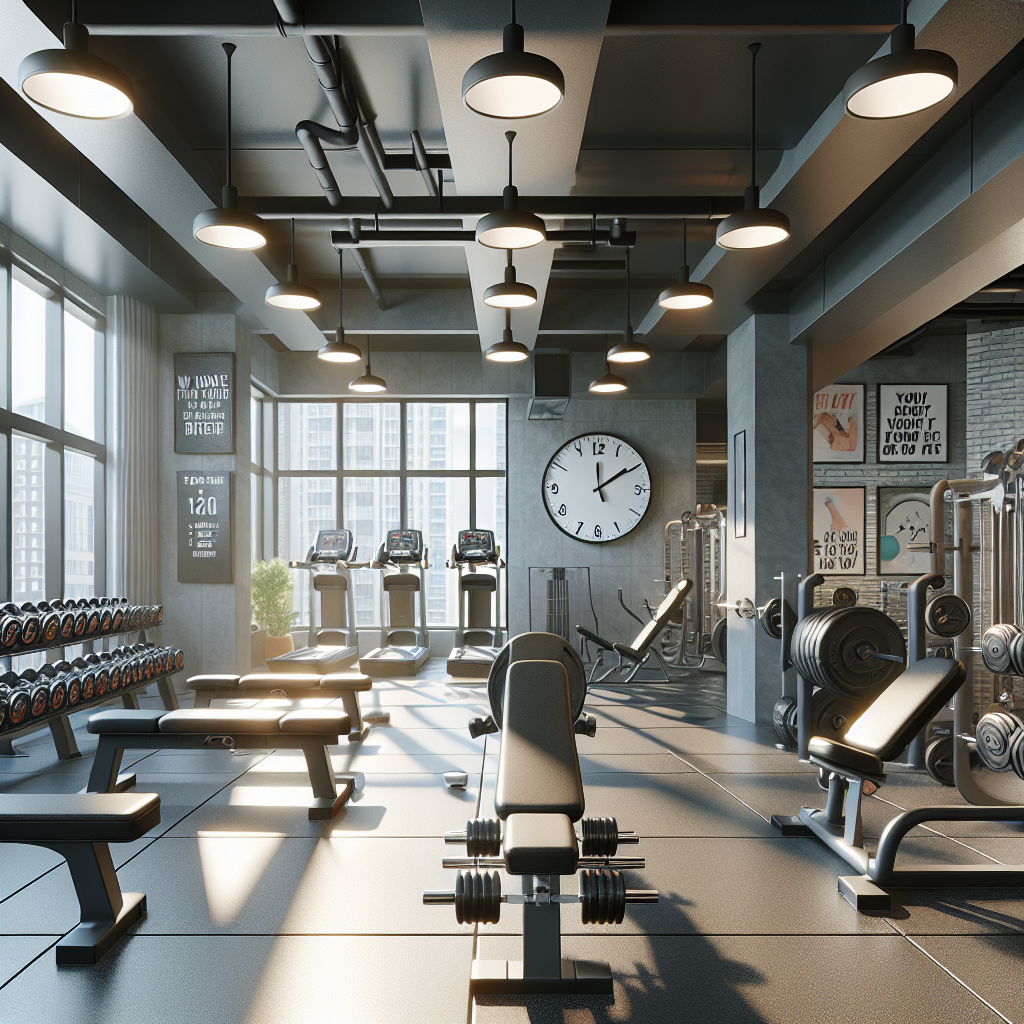
Adopting a structured gym routine comes with a multitude of benefits that can significantly enhance your fitness journey. One of the primary advantages is the ability to track progress. When you follow a consistent routine, it becomes easier to monitor improvements in strength, endurance, and overall physical fitness. This not only keeps you motivated but also helps in setting realistic goals and milestones.
Another crucial benefit is the prevention of overtraining and injuries. A well-planned routine ensures that different muscle groups are targeted on different days, allowing adequate recovery time. This approach minimizes the risk of strains, sprains, and other injuries commonly associated with random or poorly planned workouts.
Furthermore, a structured routine can lead to more efficient workouts. Knowing exactly what exercises to perform and in what order reduces downtime and keeps your heart rate elevated, maximizing calorie burn and muscle engagement. This efficiency translates to better results in less time, which is particularly beneficial for those with busy schedules.
Consistency is key to achieving long-term fitness goals, and a structured routine fosters this discipline. By having a clear plan, you are more likely to stick to your workouts, make fewer excuses, and build a sustainable fitness habit. Additionally, structured routines often include a variety of exercises, which can prevent boredom and keep you engaged.
Ultimately, the benefits of a structured gym routine extend beyond physical gains. The mental clarity, stress relief, and sense of accomplishment that come with regular, organized workouts contribute to overall well-being. Embrace the structure, and watch as your fitness journey transforms.
Essential Gym Equipment for Effective Workouts
To maximize your workout routine at the gym, having access to the right equipment is essential. Each piece of equipment serves a specific purpose and can target different muscle groups, contributing to a well-rounded fitness regimen.
Free Weights: Dumbbells and barbells are fundamental for strength training. They allow for a full range of motion and can be used for a variety of exercises, including squats, deadlifts, presses, and rows. Free weights are excellent for building muscle mass and improving functional strength.
Machines: Gym machines like the leg press, lat pulldown, and chest press provide guided motion, which is beneficial for beginners learning proper form. Machines can also isolate specific muscles more effectively, making them ideal for targeted training.
Cardio Equipment: Treadmills, stationary bikes, and elliptical machines are vital for cardiovascular health. These machines help improve endurance, burn calories, and enhance overall heart health. Incorporating cardio into your routine can also aid in recovery and muscle endurance.
Resistance Bands: These versatile tools can be used for strength training, flexibility exercises, and rehabilitation. Resistance bands are portable and come in various resistance levels, making them suitable for all fitness levels. They are particularly useful for adding resistance to bodyweight exercises.
Stability Balls and Bosu Balls: These promote balance and core strength, essential components of a comprehensive fitness routine. Stability balls can be used for exercises like planks, crunches, and even as a bench for certain free weight exercises. Bosu balls add an element of instability, challenging your balance and engaging more muscles.
Foam Rollers: Recovery is a crucial part of any workout routine. Foam rollers help in myofascial release, reducing muscle soreness and improving flexibility. Regular use can prevent injuries and enhance performance.
By incorporating a mix of these essential gym equipment into your workout routine, you can target various muscle groups, improve your strength and endurance, and achieve your fitness goals more effectively.
Sample Weekly Workout Schedule

Creating a structured workout routine at the gym is crucial for achieving consistent results. A well-rounded weekly schedule ensures balanced muscle development, adequate recovery, and progressive overload. Here’s a sample workout schedule to guide you:
Monday – Chest and Triceps:
- Bench Press: 4 sets of 8-10 reps
- Incline Dumbbell Press: 3 sets of 10-12 reps
- Chest Flyes: 3 sets of 12-15 reps
- Tricep Dips: 3 sets of 10-12 reps
- Tricep Pushdowns: 3 sets of 12-15 reps
Tuesday – Back and Biceps:
- Deadlifts: 4 sets of 6-8 reps
- Lat Pulldowns: 3 sets of 10-12 reps
- Seated Rows: 3 sets of 12-15 reps
- Barbell Curls: 3 sets of 10-12 reps
- Hammer Curls: 3 sets of 12-15 reps
Wednesday – Rest or Active Recovery: Take a break or engage in light activities such as yoga, stretching, or a leisurely walk to promote recovery.
Thursday – Legs:
- Squats: 4 sets of 8-10 reps
- Leg Press: 3 sets of 10-12 reps
- Leg Curls: 3 sets of 12-15 reps
- Leg Extensions: 3 sets of 12-15 reps
- Calf Raises: 3 sets of 15-20 reps
Friday – Shoulders and Abs:
- Overhead Press: 4 sets of 8-10 reps
- Lateral Raises: 3 sets of 12-15 reps
- Front Raises: 3 sets of 12-15 reps
- Plank: 3 sets, hold for 1 minute
- Russian Twists: 3 sets of 20 reps
Saturday – Full Body or Cardio: Engage in a full-body workout or focus on cardiovascular exercises such as running, cycling, or swimming to enhance overall fitness.
Sunday – Rest: Allow your body to fully recover to ensure you’re ready for the upcoming week.
Adhering to this weekly workout schedule can help you stay organized and motivated. Remember to listen to your body and adjust the intensity and volume as needed. Consistency is key to seeing progress in your fitness journey.
Key Exercises for Maximum Results

When it comes to crafting a workout routine at the gym that delivers maximum results, incorporating key exercises is non-negotiable. These foundational movements target multiple muscle groups and stimulate overall strength and hypertrophy. Below are some essential exercises to include in your regimen:
1. Squats
Squats are a powerhouse exercise that works the quads, hamstrings, glutes, and core. They help build lower body strength and improve functional movement. Whether you choose the back squat, front squat, or goblet squat, ensure your form is impeccable to avoid injury.
2. Deadlifts
Deadlifts are unparalleled for developing posterior chain strength, targeting the hamstrings, glutes, lower back, and traps. They also enhance grip strength and core stability. Variations include conventional, sumo, and Romanian deadlifts.
3. Bench Press
The bench press is a staple for upper body strength, primarily working the chest, shoulders, and triceps. It’s a versatile exercise with multiple variations like incline, decline, and flat bench presses to hit different parts of the chest.
4. Pull-Ups
Pull-ups are a fantastic bodyweight exercise that focuses on the lats, biceps, and upper back. They improve upper body strength and muscle definition. If you find pull-ups challenging, start with assisted pull-ups or lat pulldowns.
5. Overhead Press
The overhead press engages the shoulders, triceps, and upper chest. It’s crucial for developing upper body strength and stability. Dumbbells, barbells, or kettlebells can be used for variation.
6. Rows
Rows are essential for a strong back and balanced physique. They target the upper and middle back, biceps, and rear delts. Options include barbell rows, dumbbell rows, and seated cable rows.
Integrating these key exercises into your workout routine at the gym ensures that you’re targeting all major muscle groups effectively. Focus on proper form and gradually increasing weights to maximize gains and minimize injury risk.
Tips to Stay Motivated and Consistent
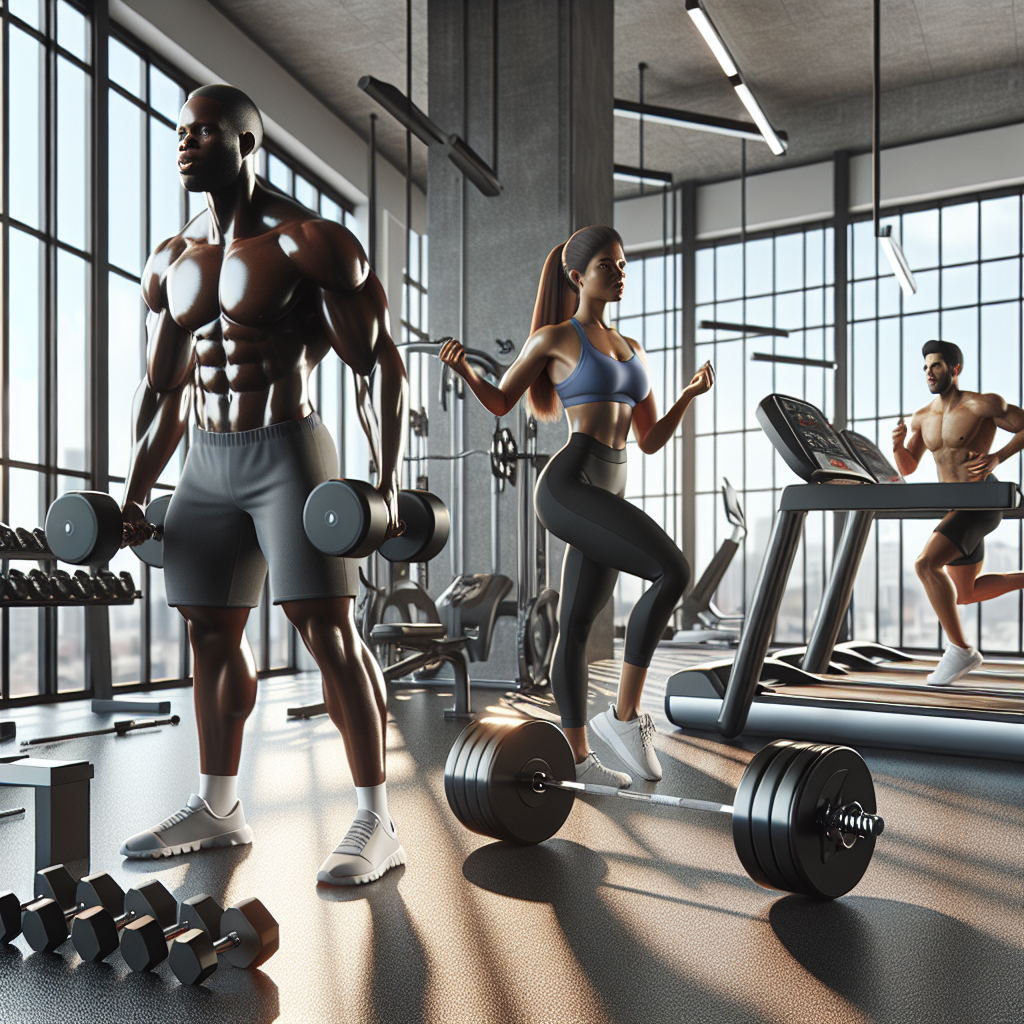
Staying motivated and consistent with your workout routine at the gym can be challenging, but it’s essential for achieving long-term fitness goals. Here are some tips to help you stay on track:
1. Set Clear Goals
Define what you want to achieve, whether it’s building muscle, losing weight, or improving endurance. Clear, measurable goals give you something tangible to work towards and help you stay focused.
2. Create a Schedule
Plan your workouts just like any other important appointment. Consistency is key, so allocate specific days and times for your gym sessions. Sticking to a routine helps build a habit.
3. Track Your Progress
Keep a workout journal or use a fitness app to log your exercises, weights, and reps. Tracking progress not only keeps you accountable but also lets you see how far you’ve come, which can be incredibly motivating.
4. Find a Workout Buddy
Having a workout partner can make gym sessions more enjoyable and keep you accountable. You’re less likely to skip a workout if you know someone is counting on you to be there.
5. Mix It Up
Avoid monotony by varying your exercises and routines. Trying new workouts keeps things interesting and challenges your body in different ways, preventing plateaus.
6. Reward Yourself
Set small milestones and reward yourself when you achieve them. Rewards give you something to look forward to and can be a great motivational tool. Just ensure the rewards align with your fitness goals.
7. Stay Positive
Maintaining a positive mindset is crucial. Celebrate your successes, no matter how small, and don’t be too hard on yourself if you miss a workout. What matters is getting back on track.
Implementing these tips can make a significant difference in your fitness journey. Remember, consistency and motivation are the cornerstones of success. Explore more at Muscle Theory for additional tips and expert advice to keep you inspired and on track.

